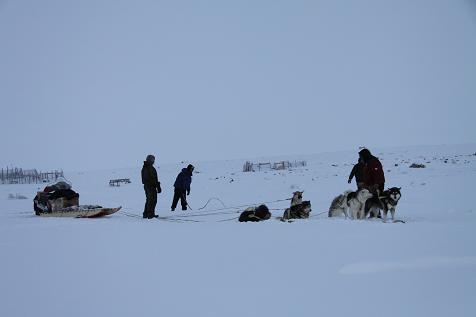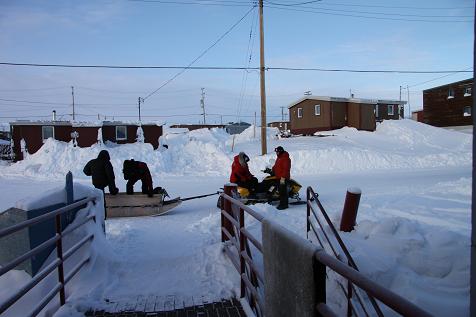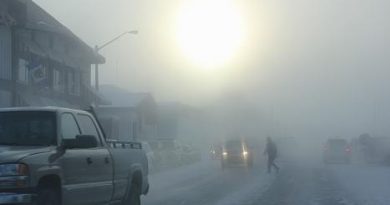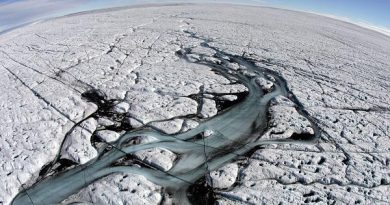Camping with hunters at -28 Degrees Celsius
I said goodbye to Eilis, Jean and Luc this morning. Until now Eilis and I had tried to co-ordinate our stories so that we could work together and share the camera crew. But Eilis’s next story is taking her to Cape Dorset, on the southwestern edge of Baffin Island, but I still had interviews to do in Clyde River.
It felt lonely without them, I liked their company and we got along very well.
I needed to talk to Jake Gearheard, the coordinator of Ilisaqsivik Society, a health and wellness centre in Clyde River about joining a healing trip on the land. This would mean a few days of hard camping following around Inuit youth as they learned about their culture, hunting, dog sledding and surviving on the land from experienced hunters. I also needed to find an outfitter who could supply me with transportation and accommodation at the camp site.
Once again, I turn to Elijah Palituq. Elijah is part of a support team that will go out on eight snowmobiles to set up camp and help out the dog sledders in case of an emergency. To my relief, Elijah had an extra space in his tent and agreed to take me along. All I had to do is to pack up my bag and buy some food to last three or four days.
I walked back to the hotel and to my surprise I saw Eilis, Jean and Luc in the common area. The weather was bad and their flight had been cancelled. It was bad news because it totally screwed up Eilis’s tight schedule. But she’s taking it in stride. This is the Arctic after all.
Jean volunteered to come shopping with me and I gladly accepted: he’s an experienced outdoorsman with lots of advice to spare. The Northern Store was packed with shoppers, it’s was as if the entire town decided that they had to do some last-minute shopping. We browsed the isles, trying to get some relatively healthy food. It wasn’t easy: the choice of healthy foods was very limited, yet the shelves were packed with junk food: high on carbs and sugar and low on proteins or fibre. Canada’s North suffers from a serious addiction to sugar and it shows: every shopping cart except mine was loaded with pop and at least one box of cookies or doughnuts.
My shopping cart contained enough food to sustain me for a week, an additional memory stick for my digital camera and a box of ten .303 rounds for Elijah’s rifle. I hesitated for a second, imagining the expression on the face of our finance people back in Montreal when I filed my CBC expense report, but then I told myself they won’t be camping out in the wilderness with hungry polar bears roaming around.
Elijah’s wife Lizzie called the hotel to tell me that Elijah would pick me up at 5 pm. I was packed and ready but there were a couple of hours to spare, so I went out on the ice with the team to film as the dog teams left for the campsite one by one.

Elijah showed up at 5 pm, true to his word. Jean and Luc helped to load my gear into the qamutik, a wooden sleigh towed by snowmobile or pulled by dogs. I suppose I’d passed the test – I was very excited because for the first time I sat behind Elijah on the snowmobile, sparing myself another bone-jarring ride in the komatik.

I am no longer a tourist as I sit in this position on the snowmobile. I see the land before me like the others, my gear in the komatik behind. Only tourists and children are usually back in the sled. I feel the land, and the energy of the hunters.
I am continuously surprised by Elijah’s ability to navigate on the land and ice without ever getting lost. We ride in pitch darkness, enveloped in a milky haze of snowfall. I look around and can’t see any land features. We follow snowmobile tracks that sometimes branch out left or right and I have no idea how Elijah decides which path to follow: all I can see is the yellow parabola of our headlights.
I’ve lost track of time: we might have been riding for 40-45 minutes, maybe longer. I know that the camp is not very far from Clyde River. We come upon it suddenly. It sits on the slope of a hill, but I don’t know what’s beyond it. Perhaps it’s an island but I can’t tell for sure. I can make out the outlines of two houses and I see three tents glowing in the dark like Chinese paper lanterns. On the left I see four tiny plywood cabins. When I come closer, I see that the cabins are sitting on top of komatiks: this must be the Inuit version of a mobile home.
Elijah takes me to his tent: I’ll be bunking with his son, Jonathan, and Jonathan’s friend, Teeman. Elijah proudly informs me that he made the tent himself. It’s an 8×12 foot white canvas tent. It has an outer waterproof shell and an inner layer of insulated material. Inside, a Coleman naphta stove (a type of fuel commonly used up north) is hissing busily, keeping the temperature so warm I can sit in my T-shirt. A Coleman lamp gives plenty of light.
It feels strangely cozy.
Correction: This blog is by Levon Sevunts, not Khady Beye as was previously bylined.


